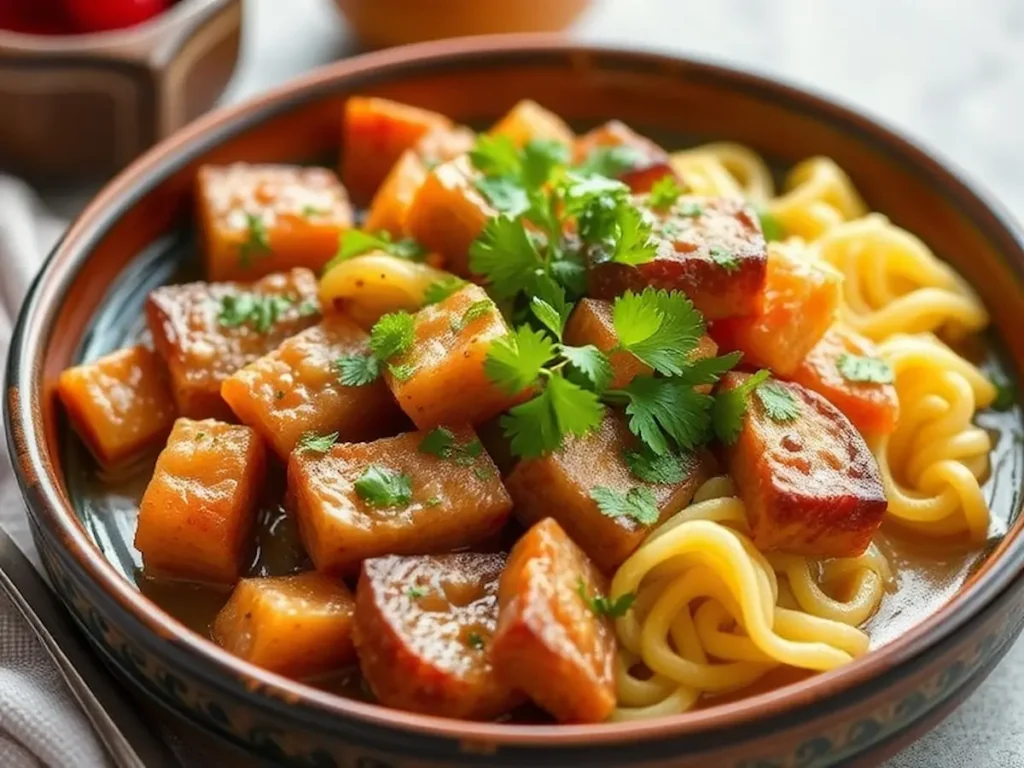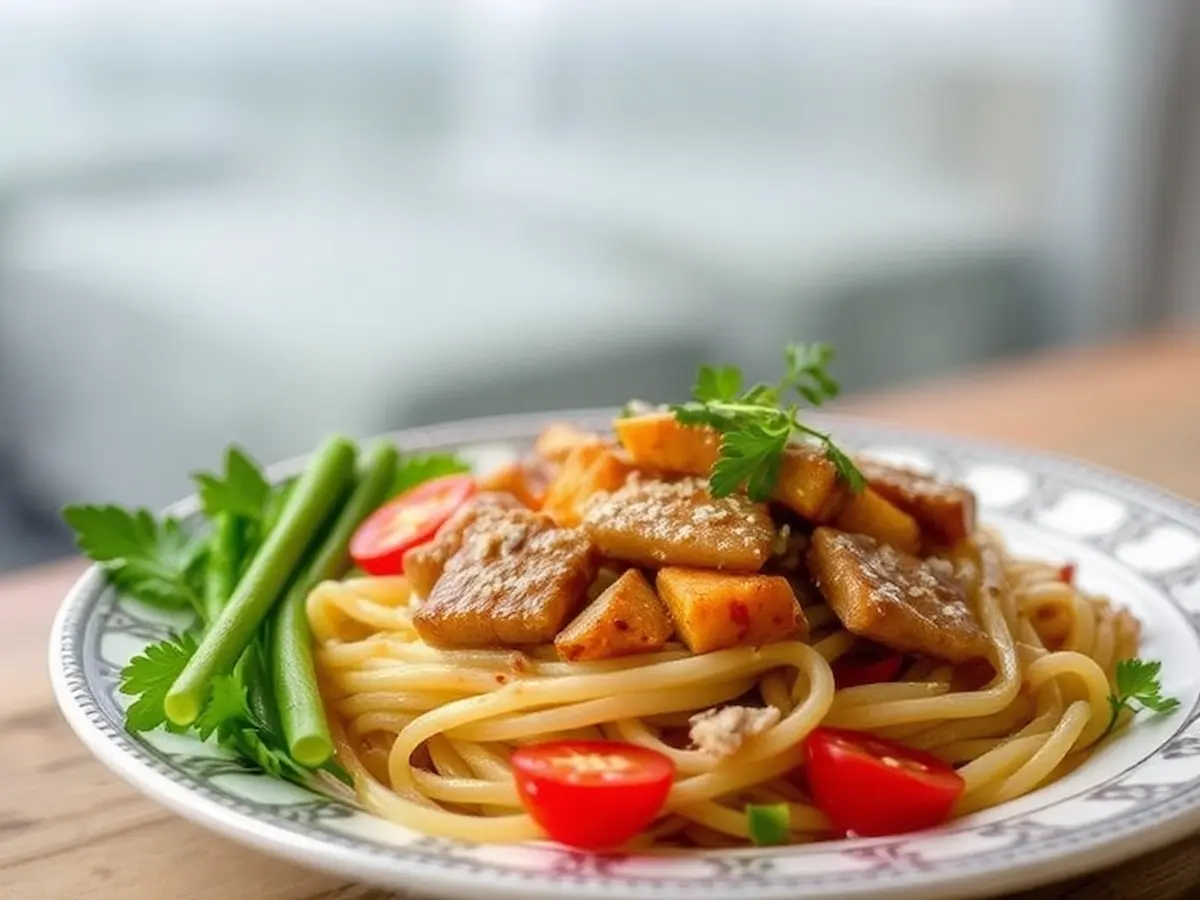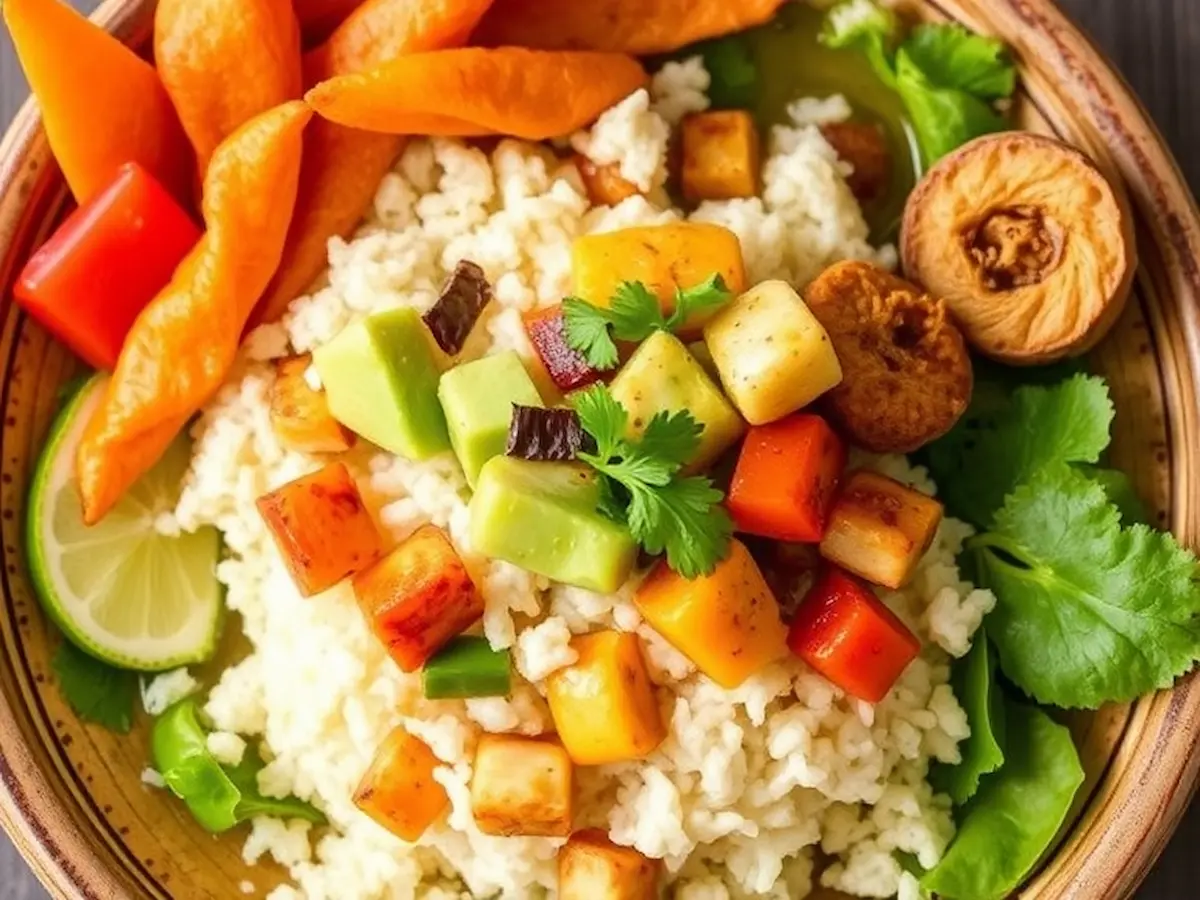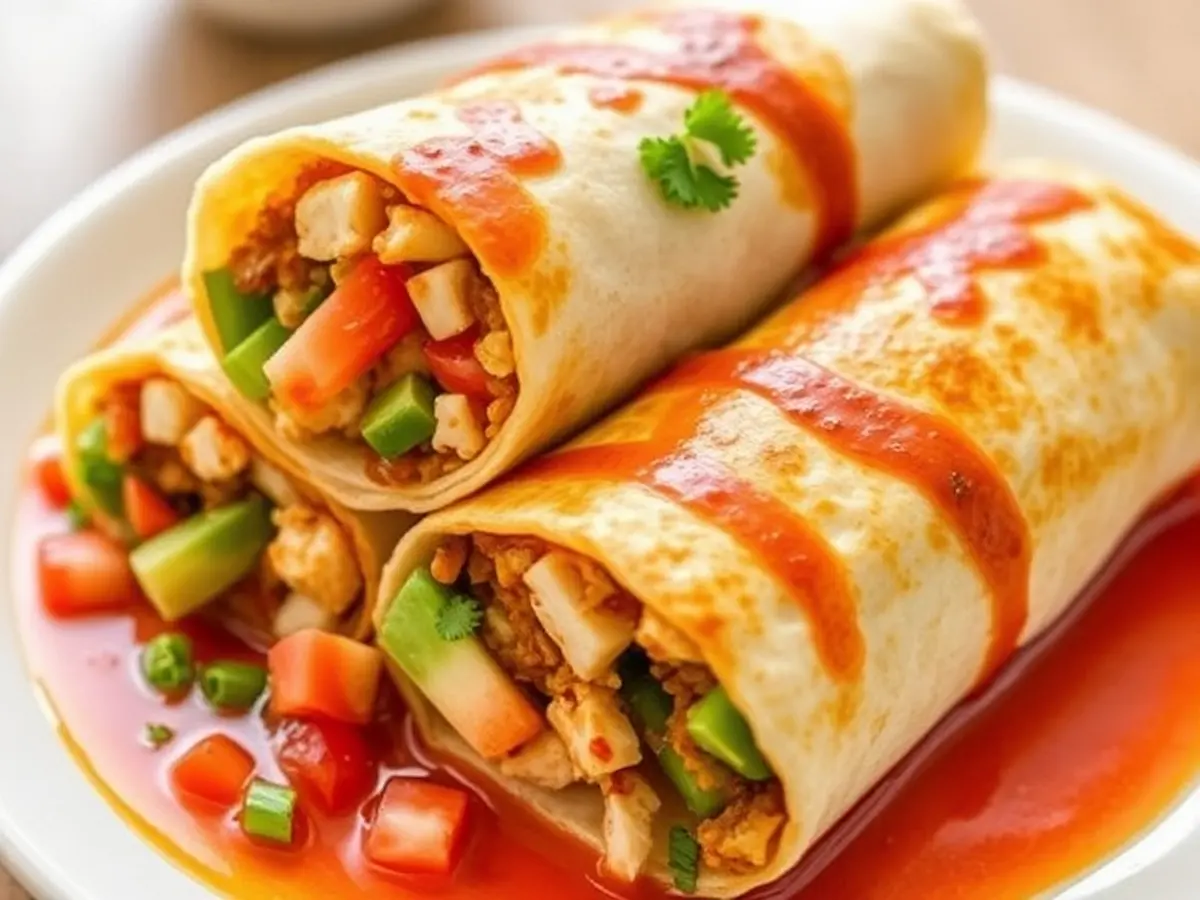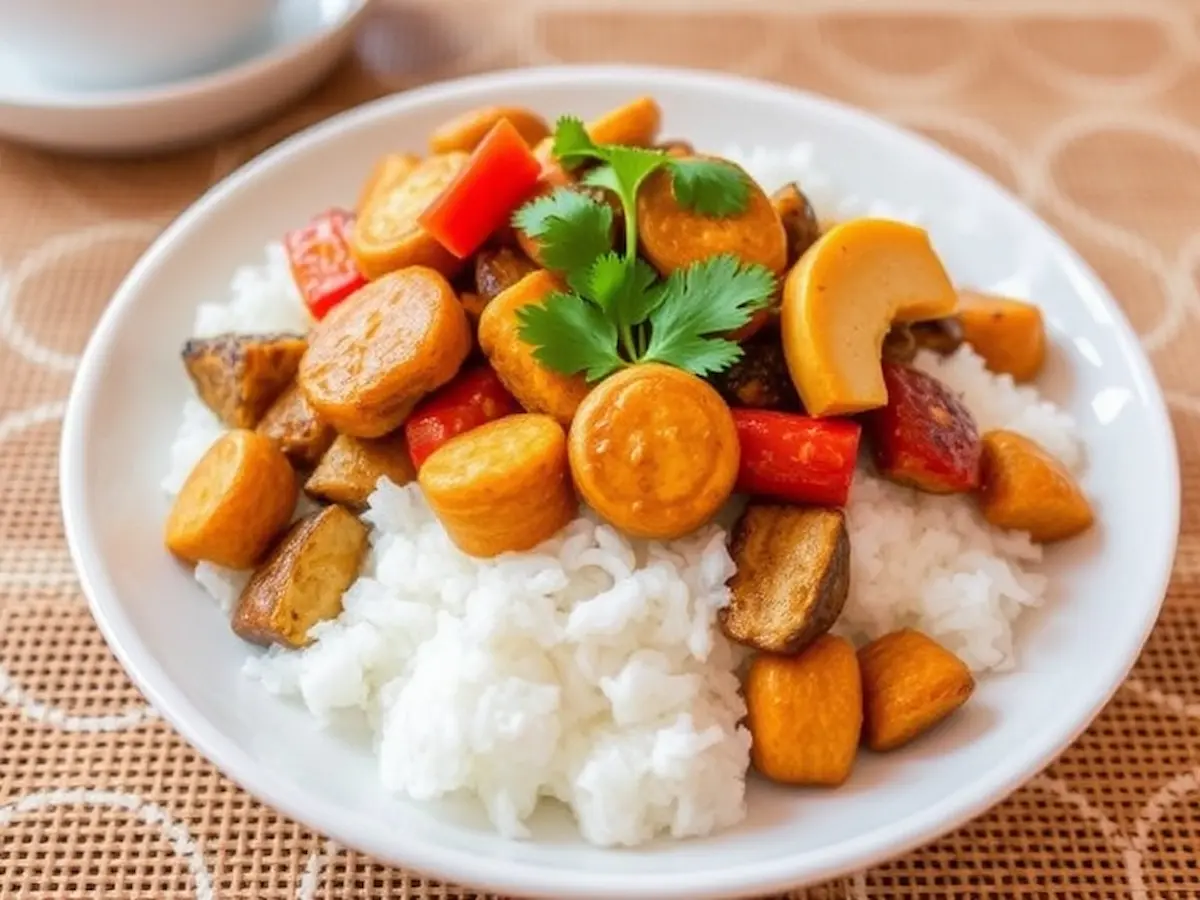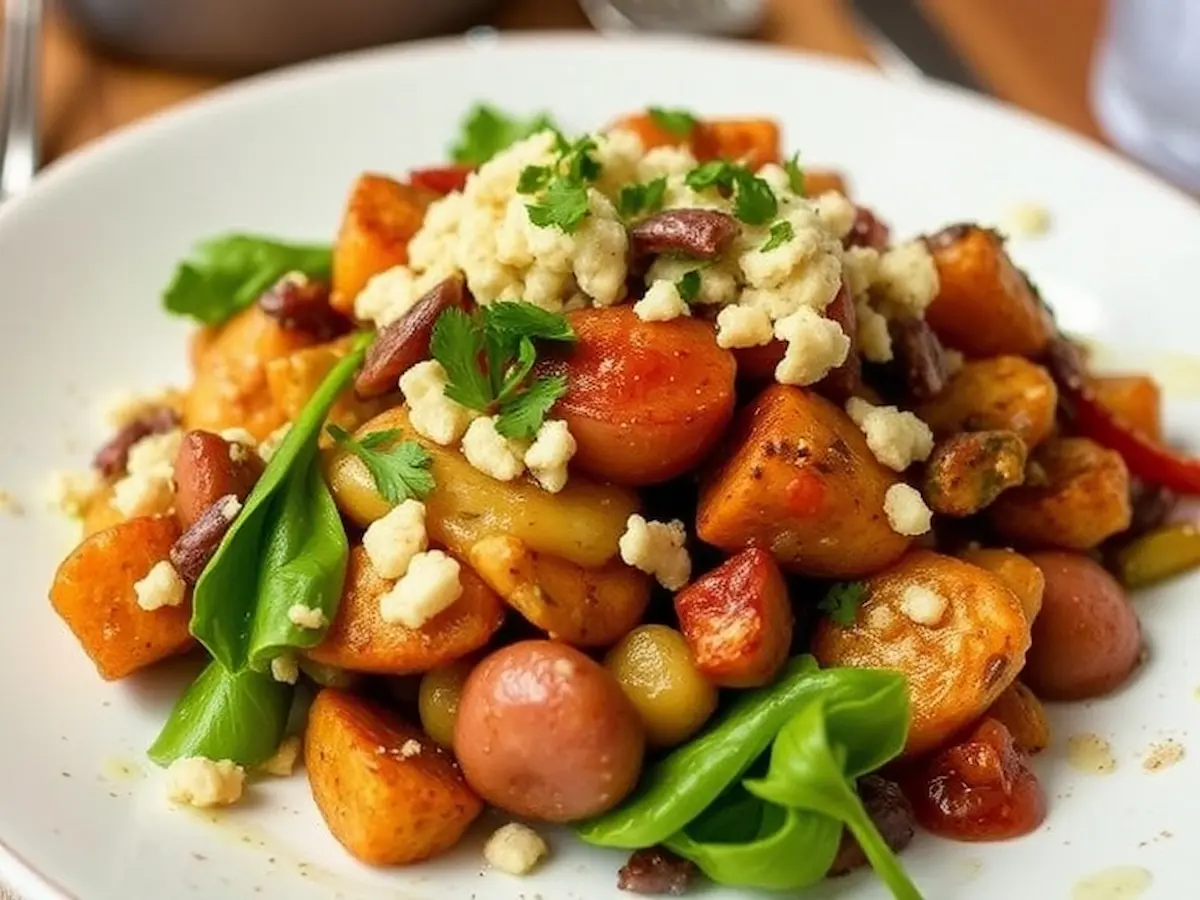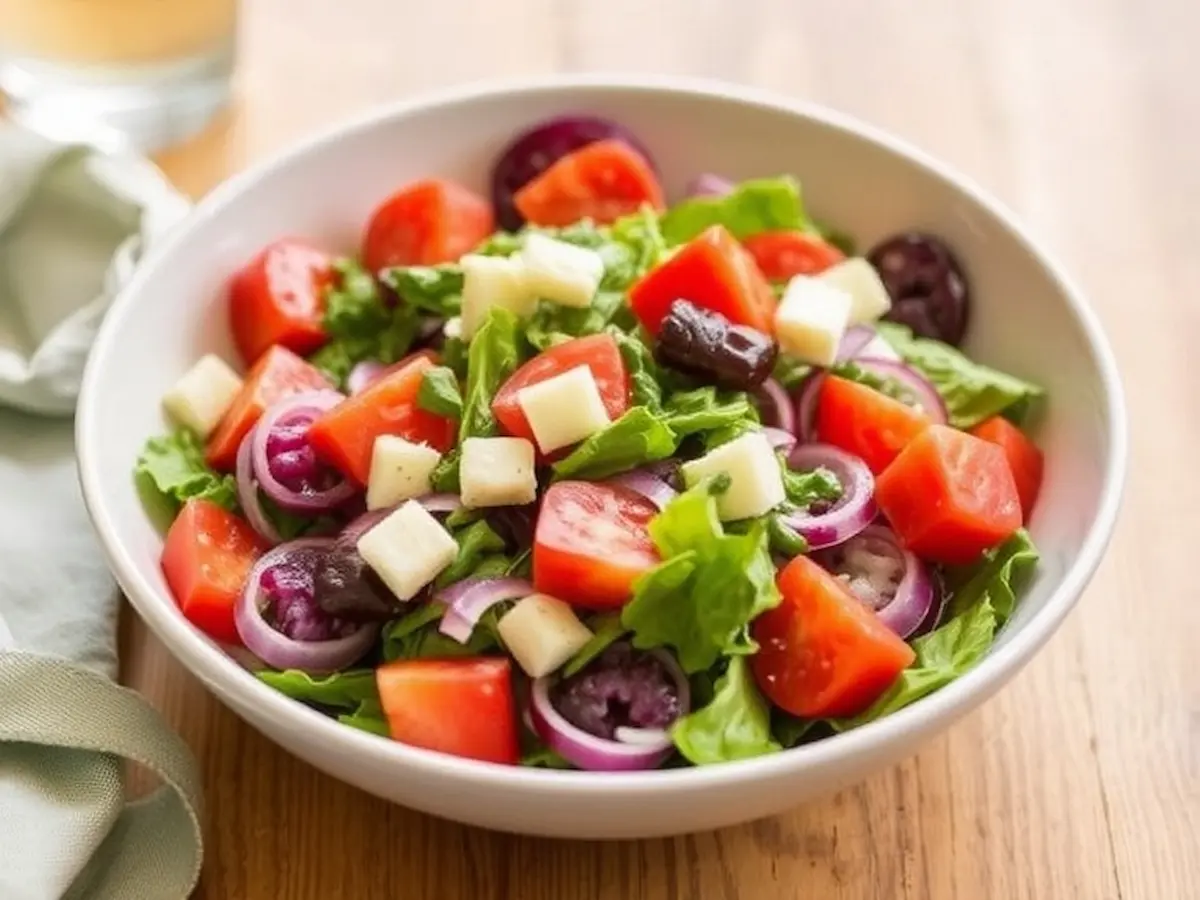Introduction
Were you aware that Georgian cuisine is well-liked in its country of origin and renowned worldwide? Comprising bold, diverse flavors and inventive culinary aspects, Georgian cuisine has become a favorite among adept palates worldwide. Yet, the monumental element lies within the unique recipes that have stood the test of time. From succulent, savory ingredients to wildly diverse dishes, Georgian cuisine revels in its rich history and culture, effectively preserving tradition while luring palates into the luscious delights of exquisite flavor.
https://valuablerecipe.com/mouthwatering-lebanese-cuisine-dishes/
Notably, the most famous Georgian cuisine remains quite trendy internationally. Georgian Food has already learned how to ignite the hearts and preferences of international clients with its exceptionally generous and unique food tendencies. But the most incredible pride of Georgian cuisine starts with its recipes, or a treasury of dishes that enclose the best samples of Georgian cuisine.
At the crossroads between Eastern Europe and Western Asia, Georgia fares no better in its history of cultural relationships with Russia. Such relationships, which one would say influenced Georgian gastronomy through the years, quickly transformed to include the flavors and methods of preparation evident in typical Russian culinary practices in atypical Georgian recipes. The result is a fireworks display of flavors that enliven your ideas for preparations.
Add a touch from Georgia’s kitchen world with its top-rated culinary recipes, deliciously harmonious meal preparation techniques, and original kitchen creations. Get set and discover flavorful dish inspirations that will have your taste buds embarking on an incredible journey.
Key Takeaways: Georgian Cuisine
- Georgian cuisine is famous worldwide for its rich flavors and unique kitchen creations.
- Affected and inspired by Russian tastes and cooking methods, Georgian cuisine has utilized this general experience and developed a treasure trove of priceless recipes.
- We will review top-rated culinary recipes, the yummiest meal preparation methods, and the most extraordinary kitchen creations.
- Be prepared to travel around Tbilisi, as the Georgian cuisine has much to surprise you.
The Smell of the Georgian Cuisine Plates: Traditions and Influences
Georgian cuisine is a feast of recipes that goes on from one generation to another generation of Georgian people. Therefore, Georgian gastronomy still preserves an active palette of flavors and interrelated dishes despite its susceptibility to various cultures and histories.
The Historical Palette: Persian and Russian Influence on Georgian Gastronomy
Georgia went on to assimilate a mosaic of culinary influences from its location at the crossroads of Eastern Europe and Western Asia. The reigning Persian Empire left a powerful impact on Georgian cuisine for centuries. Two of the most classic Persian flavors, saffron, dried fruits, and aromatic spices, find their way into Georgian dishes to give them a special touch of flavor and make them intricate.
https://valuablerecipe.com/best-foods-potato-salad-recipe/
Russian influence can also be rooted in Georgian cuisine, particularly its food components and preparation techniques. The closeness of the Guyanese Empire to that of Georgia and the trading of cultures has made Georgian recipes infused with Russian tastes and cooking techniques. This is very evident in a meal like Pelmeni, a type of dumpling, which the Georgians’ rendition of is called Khinkali.
Walnuts and Herbs: Specific Aromatic Ingredients of the Nominal Georgian Foods
Seasoning plays a central role in delving into the tastes and character of Georgian cuisine with unique ingredients. Walnuts are among the prominent plant-based ingredients used in some of the products. Wool is a traditional product of Georgian cuisine, and its purpose is to add a buttery taste to several dishes. The paste can be applied to meats and vegetables for sauces and dressings. In one form or another, it is present in cuisines. By analogy with the walnut sauce, a signature dish that can be based on walnuts is Satsivi, which unites a chicken or turkey under a creamy nut layer.
Herbs are another fundamental component of dishes in Georgian cuisine, adding freshness, aroma, and flavor. Among frequently used herbs in Georgian cuisine are coriander, tarragon, mint, and parsley. Herbs are added to or mixed with dishes to season many meals, like stew, salads, or grilled meat, improving the dish’s taste and appearance.
https://valuablerecipe.com/broadway-cuisine/
Georgian cuisine has been influenced by its rich culinary traditions and the influences it has gathered since immemorial. Persian and Russian flavors have stamped their traits in Georgian gastronomy, merging into an exciting fusion of flavors that delights the senses. Characteristic ingredients like walnuts and herbs can be combined to achieve depth and elaboration for a marvelous experience in gastronomy, together with its traditional roots.
Studying the Most Recognized Georgian Appetizers and Side Dishes
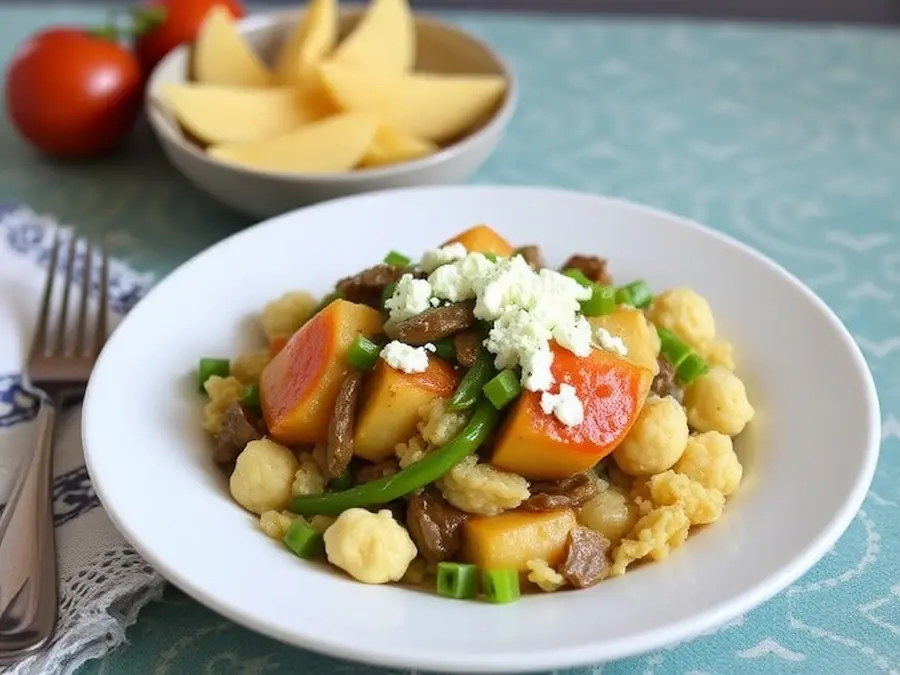
Georgian cuisine offers a pretty vast range of tasty appetizers and side dishes that can usually be found. What is presented in the above-stated dishes gives us a taste of what Georgians have to offer in terms of taste and nourishment. Thus, the Badrijani Nigvzit is a roll of eggplants grilled with a walnut-garlic paste topping. Pkhali is a delicious relish of vegetables seasoned with walnuts and varied types of herbs, and it is a fact that these appetizers are different and tasty. Such dishes are more than a representation of the rich and colored tradition of Georgian cuisine. They are perfect for any starter on a Georgian table.
Appetizers and side dishes are unique in Georgian cuisine because they burst with traditional flavors and open the following course. Fusing fresh materials and unique techniques creates an appealing range of appetizers and side dishes. Your guests will love them.
“Georgian appetizers are a delight for the senses. This is how herbs, spices, and distinctive flavors combine to generate a wholesome, unforgettable gastronomic experience. These will please varieties of tastes, from the sourness of Lobiani—delicious bread stuffed with beans—to the creamy and well-spiced Lobio salad, one of the leading classics in the culture of the Georgian bean salad. This only proves the skillfulness of Georgian cuisine.” —Chef David Kiknadze
Georgian appetizers and side dishes are delicious and represent the country’s rich food culture. Each dish has a whole story behind it, exemplifying classic preservation preparations through the ages. Be it the refreshing and sour taste of Jonjoli, a pickled sprout of the Bladdernut tree, and so forth, some are earthy and aromatic, like the ones coming from Satsivi, a walnut sauce served with poultry, whereas others have taste profiles apart.
While setting up your Georgian-inspired dinner featuring some of the most notable Georgian appetizers and side dishes, they will insert great diversity into the menu, genuinely helping introduce people to Georgia’s cuisine. Georgian appetizers and side dishes range from popular traditional flavors to new recipes, displaying the country’s rich culinary tradition and cultural heritage. They won’t allow you to forget this great impression.
Valuable Cuisine Recipe: Mastering the Art of Georgian Mains
Georgian cuisine is well known for its savory and varied main dishes, which abound with the region’s excellent culinary skills. These valuable recipes reflect the traditions and tastes that travel through the heart of Georgian comfort food.
Khachapuri: The Heart of Georgian Comfort Food
And speaking of Georgian cuisine, one cannot help but stumble upon the iconic Khachapuri: bread filled with cheese, kissed by the affection of Georgians and non-Georgians alike. This iconic dish is often referred to as the soul food of Georgia due to the warmth and fulfilling experience it offers to lovers of Georgian food.
But khachapuri is a delicate, pillowy lightness of baked-to-golden-brown, soft bread filled with an oozing cheese center, though most probably a mixture of feta and mozzarella, which melds into a creamy tanginess. Each bite harmonizes the salty cheese and the rich, buttery crust, producing an irresistible flavor.
These dishes, while irresistible, also stand out because they vary in structure. There is an Imeretian Khachapuri, which, many people say, has the most basic yet satisfying cheese filling; an Ajarian Khachapuri; and many more. The flavor profile changes from one to the other, bringing the taste of the heart of Georgia: from Ajarian Khachapuri to Imeretian Khachapuri.
https://valuablerecipe.com/4-vet-approved-homemade-cat-food-recipes/
Khinkali: Pleating Flavors in Georgian Dumplings

Khinkali is one of the brightest discoveries of Georgian culinary art. It is a dumpling made with a pleated texture of meat stuffed with crushed beef, onion, some spices, and thoroughly blended herbs that can be tasted with a single nibble when steaming.
However, the sumptuous filling and the art of folding the dumplings set the humble Khinkali apart. Skilled hands delicately pleat the dough into intricate patterns, creating something beautiful to seal while cooking the delicious fillings.
Khinkali is not food; it is an experience. Eating dumplings is a ritual. It starts with holding the dumpling by its top knot, the slight bite, and then savoring the middle’s delicious juices before finishing. It is communal food shared with friends and family; it brings a sense of bonding and occasion.
Whether you go with the traditional meat stuffing for Khinkali or experiment with vegetarian options that include mushrooms and cheese as fillings, this pleated dumpling will satisfy your taste buds and fully develop your cravings.
https://valuablerecipe.com/recipe-for-mexican-cuisine-famous-tacos/
Ensure you don’t miss these invaluable recipes for Khachapuri and Khinkali while you cook through this course on Georgian cuisine. They define the real taste of Georgian comfort food as full of flavors, textures, and cultural meanings. Learning to make Khachapuri and Khinkali means feeding your body good food and becoming more deeply associated with Georgia’s different and unique culture.
Heat Your Soul with Traditional Georgian Soups
Georgian soups are essential to Georgian cuisine and preserve the country’s traditional flavor with dishes that one can find comfort in at home. These soul-warming meals nourish Georgian families, one generation after another. These richly textured Georgian soups are good enough for cold days or when you need a comforting dish to warm the soul.
Another iconic Georgian soup is Kharcho, a thick, spicy beef soup featuring tender pieces of meat simmered in a flavorful broth. The mixture of aromatic spices, such as cinnamon and coriander, with the tang of the tomatoes and the earthy walnuts added to the beef, makes it an overall satisfying and soul-warming dish.
https://valuablerecipe.com/valuable-cuisine-recipe-from-russia/
Another Georgian favorite is Chikirtma, a light chicken soup with creamy eggs, lemon juice, and cream. This exquisite soup is widely known for its fresh taste and texture, making it attractive during hot seasons. Soft chicken, fragrant herbs, and tangy cream sauce make it a harmonious dish to pamper your taste buds.
“Georgian soups speak for the culinary tradition and are the real comfort. It is classic ingredients and richness of flavor that make these soups remarkable dishes of Georgian cuisine,” says Chef Nino Gogrichiani, one of the top experts in Georgian cuisine.
These relatively simple recipes reveal the secrets of making traditional flavors right at home—in the bosom of your kitchen. Light up your stove, follow the simple recipes and techniques below, and soon enough, you’ll taste the warmth and flavors of Georgian soups on the tips of your tongues, telling tales of legendary feasts. Georgian soups satisfy many tastes, from bold and hearty to light and rejuvenating.
Let the taste of different traditional Georgian soups warm your soul. For those who like comfort and warm dishes or classic recipes, such soul-preserving food will bring them closer to the vivid heritage of Georgia’s culinary culture.
From Kharcho to Ajapsandali: Georgian Cuisine Rich in Variety
Cuisine in Georgia has always been colorful and varied, as all the country’s regions present different flavors in the overall gastronomy, with new tastes and cooked food. Different kinds of stew Dishes Are a Real Highlight of Georgian Cuisine. Substantial plates, such as Kharcho, are representative of the richness and satiety of flavors, which are ineradicable from Georgian cuisine. In their very essence, Georgian stews—based on a mixture of meat, aromatic spices, and local ingredients—portray the country’s rich history.
Moreover, each region, from the mountainous Svaneti to the coastal Adjara, offers its twists on the Georgian stew. Flavors and ingredients are diverse from one place to another, creating thoroughly distinct regional stews to please just about any appetite. Georgian stews, such as tangy tomato-based Kharcho from Western Georgia or fatty lamb stew from the Kakheti region, send a gush of delight through one’s senses.
Georgian cuisine isn’t all about meats, though. It also offers various vibrant, healthful, and bursting-with-flavor, vegetable-forward dishes. Ajapsandali is a cold vegetable stew with eggplant, bell peppers, tomatoes, and many aromatic spices. It has a ragu-like consistency and is hearty and satisfying, screaming of the abundance of summer produce in Georgia.
https://valuablerecipe.com/delightful-kimchi-fried-rice-south-korea/
Georgian Stews: Richness and Regional Varieties
Georgian stews mirror the country’s rich heritage. Every region gives its stews their unique touch simply by using the ingredients and flavors of its area. The mountainous Svaneti is distinguished by bean and meat stews. The sea-dwelling region of Adjara offers sticky seafood stews. Whether someone is a meat enthusiast or a vegetarian, Georgian stews will have something to offer their taste buds.
One famous Georgian stew is Kharcho, which is originally from Western Georgia. It is a rich and hearty stew, usually prepared with beef, tomatoes, walnuts, and intensely flavored coriander and fenugreek. It is best for colder days.
Another regional variation should be mentioned while discussing Kakheti: Kakhetian lamb stew. This stew consists of a tender portion of lamb, tomatoes, onions, and spices—it’s simply flavored to the brim and, in most cases, is served with traditional Georgian bread, Shotis Puri. The lamb stew represents the wealth of the agricultural heritage in this region and should be on every meat lover’s bucket list.
Vegetable Forward: The Georgian Typical Meal and Healthful and Vibrant Dishes
Apart from the rich stews and the development of potatoes and other vegetables in Georgian cuisine, some dishes tend to be made with vegetables. Ajapsandali might be regarded as one of the best examples of this new, shiny, and healthy approach to cooking. This dish of vegetables, such as eggplant, red bell pepper, tomatoes, and spices such as coriander, dill, and garlic, among others, can be regarded as ajapsandali preparation. The final product presented to the consumer is a delicious, enjoyable food with qualities that enhance the performance of the body organs.
The basis of Georgian cuisine lies in thinking that vegetables can act as an accent in the dishes, and this is observed in the preparations of the cuisine, most often in the great salads and elvish notably. Common foods recognized are Lobio, a bean stew, and Pkhali, a veggie appetizer that uses herbs and spices in seasoning. Among all the dishes, Lobio and Pkhali are the most illustrative of this kind of format because vegetables are featured at their best. On the other hand, it is poised with bright colors that reveal that it is firmly seasoned and flavored, and it provides a relatively healthy and delicious choice for consumers who look forward to eating a lighter meal.
Confectionery and Beverages: A Treat to Georgian Taste Buds
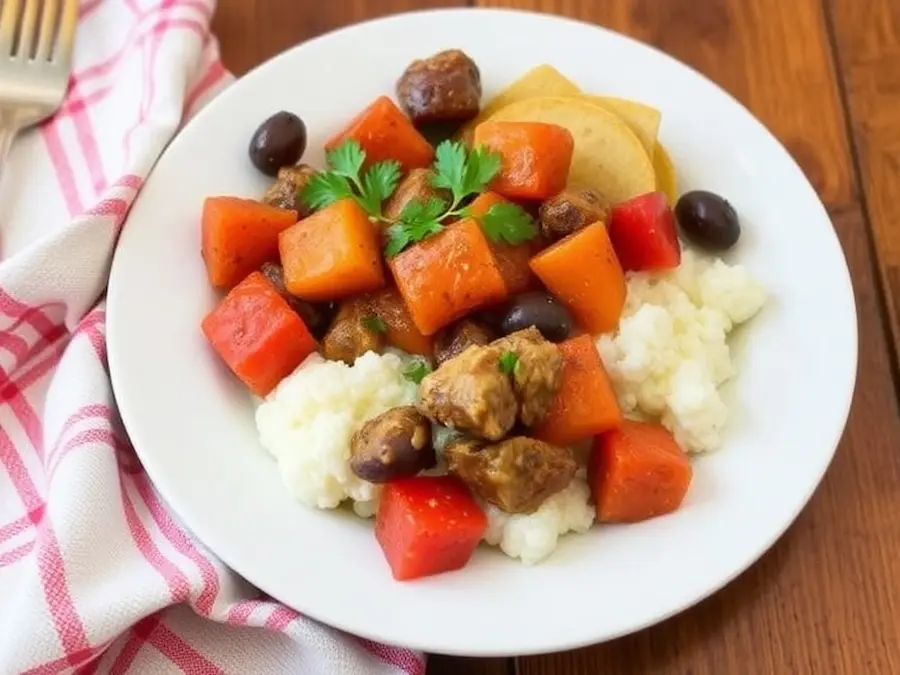
Georgian cuisine is a storehouse of flavors, and the tale does not end with its main savory dishes. Its confectionery and beverages are equally titillating yet offer some relief to those craving something sweet. From sinful desserts to local spirits, Georgian sweets and beverages promise to please and to give an experience like no other.
Sweet Surprises: Georgian Desserts Like Churchkhela
With the Georgian sweets, one of the sweet rounds could be well noted with churchkhela. This delicacy is made with dried fruit, nuts, and grape juice. Ingredients are strung and repetitively dipped into the juice to create beautiful and colorfully coated treats. The chewy presence of this treat, coupled with the natural sweetness, makes Churchkhela an endearing snack and dessert among Georgians. It is often relished at particular moments or as a tasty pick-me-up to one’s day.
Except for Churchkhela, the choice of Georgian desserts presents a panoramic view of diverse flavors and textures. Everything, from sweet pastries like the buttery Khachapuri to the nut-filled Gozinaki, can be found to satisfy one’s sweet tooth. Here, the baker’s skill in showing culinary creativity and using local, high-quality products is prevalent: from fruity or nutty to creamy desserts, every boutique of Georgian confectionery offers it.
Georgian Wine and Spirits: An Inherited Love from Ancient Times
A peek into Georgian cuisine is incomplete without elaborating on its rich heritage, encapsulating wines and spirits. The heritage of Georgian winemaking is thousands of years old and rife with traditional craft. The primary signature of Georgian wines is their unique flavor and exclusive winemaking method, as the wine is aged in clay vessels called qvevri. From crisp and aromatic whites to full-bodied reds, Georgian wine allows for a wide range of exploration by interested wine lovers.
Though wine certainly has its niche in this culture, traditional spirits are a suitable adjunct. Chacha, a rough grape brandy, finds much favor with the local population and visitors. It is produced by rectification from the remains of grape skin after wine production, so it has a strong flavor profile and is used as a digestif or in cocktails. Chacha production is a very ancient tradition in Georgia, and it reflects the general love of this country for good spirits.
https://www.bbc.com/travel/article/20220201-georgias-surprising-food-culture
Whether your vice is sweets or a glass of good wine, Georgian sweets and beverages are a treat for your taste buds. From a masterfully prepared Churchkhela to greater fullness in the realm of wines and spirits in Georgia, these gastronomic delights open a window to Georgia’s peculiar tastes and traditions.
Conclusion
Food from Georgia will be a truly adventurous journey into flavors and cultural heritage. Georgian food reveals its unique recipes for valuable dishes rich in flavors and diverse influences. Persian and Russian flavors give a dish several dimensions, while signature ingredients and techniques make picking a dish from Georgian cuisine easy.
Georgian full-course appetizers, main courses, soups, and desserts allow one to experience the depth and thorough enjoyment of Georgian flavors. From mouthwatering grilled eggplant rolls filled with walnut-garlic paste to the comforting, rich cheese-filled bread, Khachapuri, the taste palette of Georgian cuisine is varied—all those soul-filling, cozy tastes and textures inside a bowl, perfect for cold Georgian days. Not to leave out of the equation the sweet encounters of Georgian desserts, such as the famous churchkhela: dried fruits, nuts, and grape juice.
https://en.wikipedia.org/wiki/Khachapuri
Whether you are a seasoned chef, looking to step up your game in the kitchen, or an intrepid home cook, there is a whole world of new experiences in Georgian cuisine. Georgia’s multifaceted flavor and cooking technique will come with complex delight, new with each bite, revealing the uniqueness of this fantastic cuisine’s heritage. Embark on a culinary trip to Georgia and reel in the best cuisine recipes that will give you a feel of Georgian cuisine’s flavors and cultural opulence.
FAQ
Q: What is different about Georgian cuisine?
A: It is characterized by rich flavors influenced by Persian and Russian Gastronomy. It also uses signature ingredients like walnuts and herbs, which make it deep and complex.
Q: Name some of the Popular appetizers and Side dishes of Georgian Cuisine.
A: Badrijani Nigvzit, a grilled eggplant roll with walnut-garlic paste and prawn on a skewer. Pkhali is a vegetable appetizer seasoned with walnuts and herbs.
https://valuablerecipe.com/5-traditional-palestinian-cuisine-recipes/
Q: What are some traditional Georgian mains that I must try?
A: You must try Khachapuri.
Q: Which Georgian soups are known for their comforting flavors?
A: Kharcho—an oily, dense, and spicy beef soup—and Chikirtma—light chicken soup with a creamy sauce—are some of the most traditional Georgian soups, conceived to pamper and saturate.
Q: How is the diversity of Georgian cuisine manifested?
A: Georgian cuisine’s culinary versatility makes hearty stews like Kharcho available to connoisseurs of meat—and vegetable-dominated dishes, such as Ajapsandali, and vegetarians. The latter can also be said about Georgian diversification in desserts and drinks.
https://valuablerecipe.com/healthy-gujarati-cuisine-recipes/
Q: What does my culinary journey through Georgian cuisine hold in store for me?
A: While on your journey through Georgian cuisine, these things will significantly enrich your taste buds—recipes of cuisines, rich flavors, and a cultural heritage you will fall in love with.
